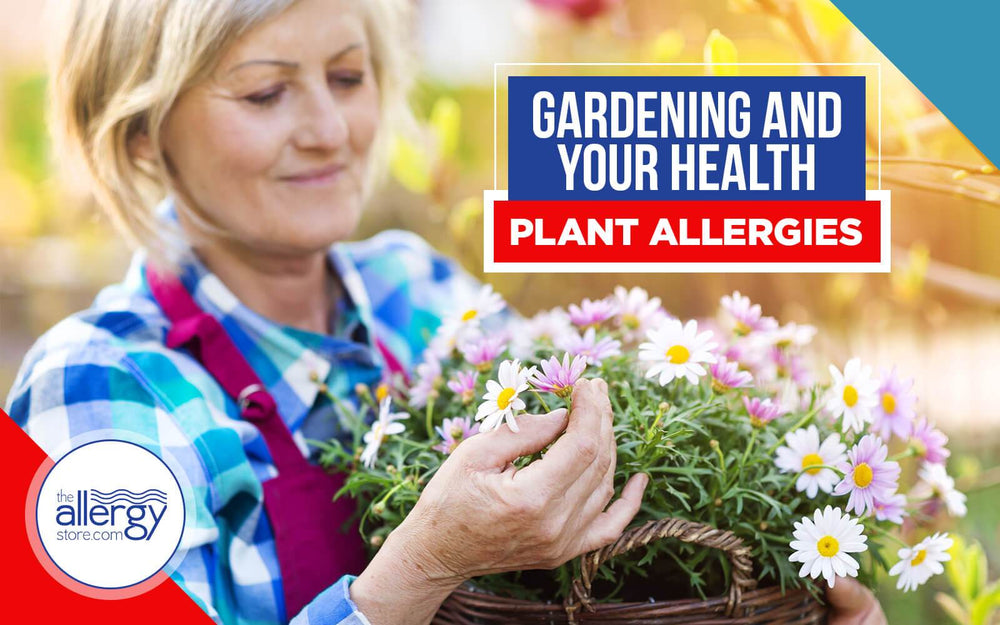
Allergic reactions are caused by an overactive immune system response to a foreign substance such as pollen, dust, or molds. When this reaction affects the eyes or nose, it results in allergic rhinitis.
Typical symptoms include sneezing, a runny nose, and itchy watery eyes. When inflammation affects the bronchial tubes, it results in asthma. Typical symptoms include wheezing and shortness of breath.
The worst allergens are typically weeds, grasses, and certain trees. Because these plants are wind-pollinated, they produce a lot of powdery, easily inhaled pollen that can trigger allergic responses.
Insect pollinated plants, such as flowers and vegetables, have pollen that is large and sticky, which generally does not cause as many problems. However, individuals who are repeatedly exposed to these plants may develop allergies.
The most typical allergenic plants include ragweed, pigweeds, and all grasses. Large shade trees such as oaks, elms, maples, pecans, mulberries, and cottonwoods can also cause problems. Most individuals are allergic to only one or two trees.
Because these trees pollinate a few weeks each year, allergic reactions can be avoided by staying indoors, wearing a protective mask, or taking medication during the weeks that they are pollinating. Some individuals may also be allergic to trees in the juniper, cypress, and sequoia families (including the Eastern Red Cedar seen on many Virginia roadsides). These trees pollinate in the winter months of January, February, Early March.
Besides trees and grasses, mold and fungi can also cause allergic reactions. They release spores into the atmosphere all year long in areas where there is abundant organic matter, moisture, and warmth. Leaf piles and compost areas can produce many molds and fungi.
The results of working near a compost pile could be even more serious than asthma or allergic rhinitis, as some fungi can colonize in asthmatic bronchial tubes, leading to more serious conditions.
Prevention
If you experience allergic reactions while working outdoors, consult with your local doctor or allergist to determine which plants are responsible and when they pollinate. You can then formulate your own personalized calendar indicating your best and worst times to be outdoors.
If you do go outside, there are several ways to minimize your exposure to pollen. These include wearing gloves, a long sleeved shirt, hat, and sunglasses or goggles. A pollen mask may also be necessary. After working outside, take a shower, thoroughly wash hair, and change clothes. The Qmask dust and pollen is really a good choice for yard work.
Weather conditions can affect the abundance of allergens in the air. Wind pollinated plants will not release pollen when it is raining, and instead are more dangerous on hot, windy days.
Mold and fungi spores, on the other hand, are more abundant during wet weather. Save gardening for days when your allergen counts are low.
Individuals with allergies should avoid certain garden chores that aggravate their symptoms, such as working in the compost pile, working with mulch or straw, raking, using power blowers, or mowing lawns. Mowing grass can cause grass particles, pollen, and mold to become airborne.
Don't plant trees, grasses, or shrubs that cause allergies. Choose plants that are insect-pollinated instead. Keep grass trimmed so it doesn't flower.
If allergies prevent you from mowing, it may be wise to invest in a yard care service or reduce your lawn area by adding flower beds or ground covers.
Eliminate weeds from the garden early, before they reach maturity and flower. Certain species of the Compositae plant family, such as mums, marigolds, and dahlias, may be cross-reactive for individuals with ragweed sensitivity.
Your doctor or allergist may also recommend medications to help alleviate allergic reactions. For gardeners with hay fever, new antihistamines are available that can relieve symptoms without causing drowsiness, hyperness, dry mouth or eyes, or upset stomach. These non-sedative antihistamines come in many forms that are taken once or twice a day, in pill or liquid form.
Eye drops can relieve itching, swelling, and irritation. Nasal sprays come in both non-steroid and corticosteroid forms, and can effectively reduce allergic reactions.
These treatments can ease pain after gardening, but are much more effective when taken as a precaution before gardening activities - and allergy symptoms - begin.
For gardeners with asthma, your doctor or allergist can recommend one of many different types of medications, in oral or inhaled form, to treat your condition.
Allergy shots or vaccinations can desensitize allergies. These treatments may be difficult and time-consuming, but they allow an individual to build up a tolerance to allergens, which is helpful to not only treat the symptoms but also the allergy itself.
Before considering these treatments, consult with your doctor or allergist to discuss possible benefits and side effects.
Common Allergy Plants
Trees and shrubs
- ash
- cottonwood
- elm
- Juniper/cedar
- maple (male)
- mulberry
- oaks
- pecan and walnut
- poplar (male)
- privet (male)
- Russian olive
- willows (male)
Grasses, flowers and weeds
- Bermuda grass
- Kentucky Bluegrass
- orchard grass
- Timothy grass
- castor bean
- ragweed
- pigweed
- lamb's quarters
Wishing you the best of health
The Allergy Store
Additional Gardening Resources and Tips

